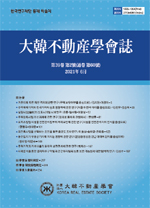본 연구는 외국인 유학생 유입의 구조적 변화와 주요 요인을 심층적으로 분석하고 향후 유학생 유입을 예측하기 위해 ARIMA 모델을 활용하였다. 연구는 2010년부터 2023년까지의 외국인 유학생 데이터를 수집하여 데이터의 정상성을 확보하기 위해 차분처리를 수행한 뒤, ACF 및 PACF 분석을 통해 최적의 모델을 도출하였다. 예측 결과, COVID-19 팬데믹과 같은 외부적 요인이 유학생 수에 큰 영향을 미쳤으며, 이후 점진적인 회복세가 나타날 것으로 예상되었다. 특히, 국적, 성별, 학위 유형, 언어 능력, 교육 만족도 등 다양한 요인이 유학생 유치와 유지에 영향을 미치는 주요 변수로 확인되었다. 본 연구는 단순한 시계열 데이터 분석을 넘어 다변량 데이터를 통합하여 유학생 유치 정책의 효과를 예측하고, 정책적 대안을 제시하였다. 또한, 언어 교육, 문화 적응 프로그램, 학업 지원 서비스와 같은 맞춤형 지원이 유학생 유치에 중요한 역할을 할 수 있음을 강조하였다. 이를 통해 한국은 글로벌 교육 허브로 자리매김할 수 있는 기반을 마련할 수 있을 것으로 기대되며, 본 연구는 데이터 기반 정책 설계와 국제적 경쟁력 강화를 위한 실질적 시사점을 제공한다.
The purpose of this study is to analyze the structural patterns of international student inflow and predict future trends using the ARIMA model. By employing data from 2010 to 2023 on international students in South Korea, the study ensures stationarity through differencing and identifies the optimal ARIMA(2, 1, 1) configuration via ACF and PACF analyses. Results highlight the significant impact of external shocks, such as the COVID-19 pandemic, on student enrollment trends, followed by a gradual recovery. The study also identifies key factors influencing student attraction and retention, including nationality, gender, degree type, language proficiency, and educational satisfaction. Moreover, the research incorporates multivariate analysis, offering insights into the role of tailored support programs such as language education, cultural adaptation services, and academic assistance. These findings provide practical recommendations for enhancing recruitment strategies and underline South Korea's potential to strengthen its position as a global educational hub through data-driven policymaking and strategic planning..
Ⅰ. Introduction
Ⅱ. Theoretical Background
Ⅲ. Methodology
Ⅳ. Results
Ⅴ. Conclusion
(0)
(0)
